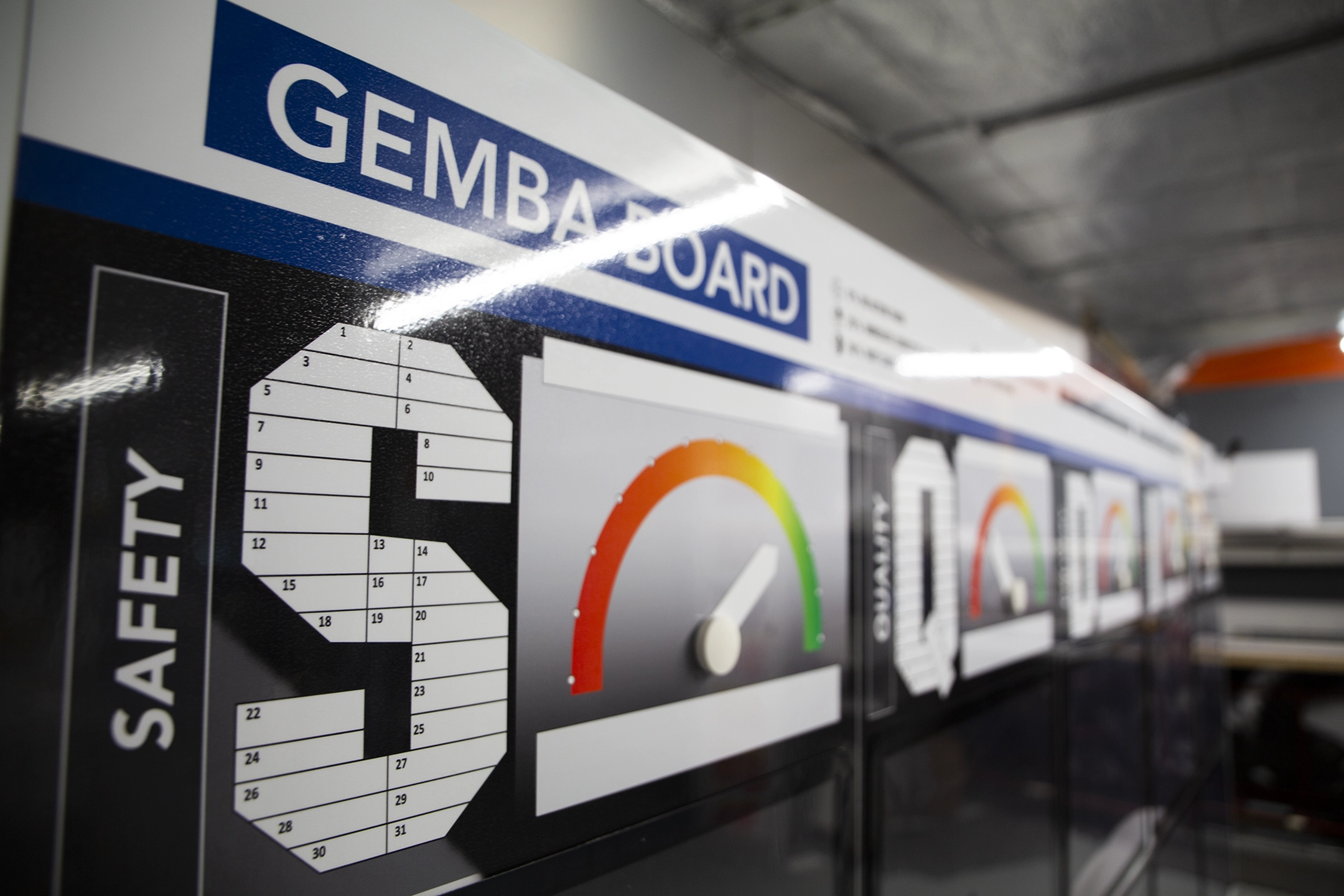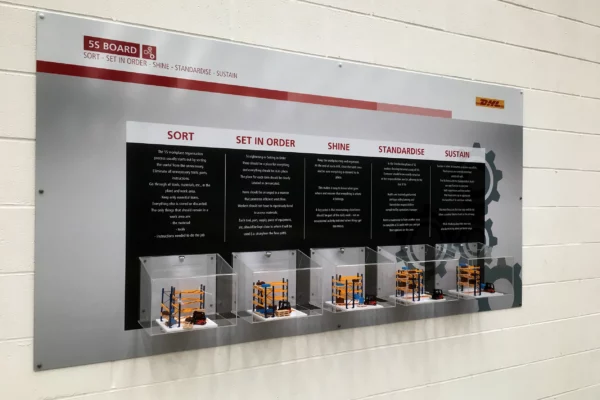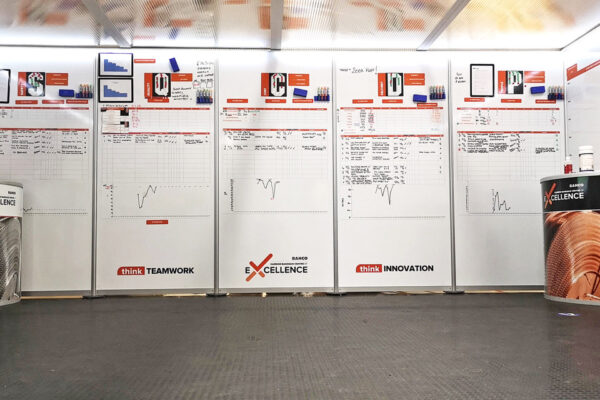How to Use an SQCDP Board Effectively
SQCDP boards are powerful tools for monitoring and improving operational performance across various industries. These boards provide a visual representation of key metrics, fostering transparency, accountability, and continuous improvement within an organisation. In this guide, we’ll explore how to use an SQCDP Board effectively to drive success in your business.

Step 1: Define Key Performance Indicators (KPIs)
Before setting up your SQCDP board, identify the key performance indicators (KPIs) that are most relevant to your organisation’s goals and objectives. These may include safety incident rates, product quality metrics, production output, delivery performance, and employee satisfaction scores. Clearly define each KPI and establish targets or benchmarks for performance measurement.
Step 2: Determine Board Layout and Design
Next, determine the layout and design of your SQCDP board to ensure it effectively communicates important information to your team. Consider dividing the board into sections for each category (Safety, Quality, Cost, Delivery, and People) and allocate space for displaying relevant metrics, charts, graphs, and action items. While you may have a vision for the board, it’s often beneficial to let professionals handle the design or assist in translating your ideas onto the board. Their expertise can ensure that the design is clear, organised, and visually appealing to maximise effectiveness.
Step 3: Establish Data Collection and Reporting Processes
Establish clear processes for collecting and reporting data to populate your SQCDP board. Determine how frequently data will be updated and who will be responsible for updating the board. Utilise digital tools or software solutions to automate data collection and reporting processes wherever possible to ensure accuracy and efficiency.
Step 4: Regularly Update and Review Metrics
Consistently update your SQCDP board with the latest performance metrics to keep your team informed and engaged. Schedule regular review meetings or huddles to discuss the metrics displayed on the board, identify trends, and address any issues or opportunities for improvement. Encourage open communication and collaboration among team members to drive accountability and problem-solving.
Step 5: Take Action and Drive Continuous Improvement
Use the insights gained from your SQCDP board to take proactive action and drive continuous improvement initiatives within your organisation. Assign responsibility for addressing specific metrics or action items to relevant team members and track progress over time. Celebrate successes and milestones achieved, and adjust strategies as needed to stay on course toward achieving your goals.
Step 6: Foster a Culture of Continuous Improvement
Finally, foster a culture of continuous improvement within your organisation by promoting transparency, collaboration, and learning. Encourage team members to actively engage with the SQCDP board, provide feedback, and share best practices. Recognise and reward individuals and teams for their contributions to improving performance and achieving organisational objectives.

Conclusion
Using an SQCDP board effectively can significantly enhance operational performance and drive success in your business. By defining key performance indicators, establishing clear processes for data collection and reporting, regularly updating and reviewing metrics, taking proactive action, and fostering a culture of continuous improvement, you can maximise the impact of your SQCDP board and achieve your organisational goals.
For high-quality SQCDP boards tailored to your organisation’s specific needs, visit our website. Our tailored boards are designed to help you monitor performance metrics, drive continuous improvement, and achieve operational excellence. Explore some of our examples today and take the first step towards success with an SQCDP board.






